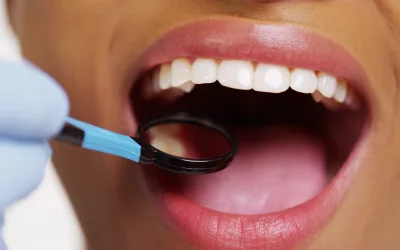A dental extraction is the removal of teeth from the socket in the alveolar bone. Extractions are performed for various reasons, such as tooth decay, periodontal disease, or dental trauma. Most extractions can be performed while the individual is awake by using local anesthetic injections to eliminate pain.
Some teeth are more difficult to remove due to their position, the shape of the roots, and the tooth’s integrity.
After the tooth is removed, a bite pack is used to stop the bleeding, and the patient is advised to avoid disturbing the blood clot, not to touch the area, and avoid vigorous mouth rinsing and strenuous activity. Oral surgery is the branch of dentistry that primarily deals with extractions, but general dentists and other dental specialists may also perform extractions as it is a core skill taught in dental schools.
One possible way to extract teeth without causing pain would be to use a technique called “twilight sedation.” This method involves sedative medications to make the patient feel relaxed and drowsy but not entirely unconscious, this allows the patient to be awake during the procedure, but they will not feel pain or have any memory of the process.
Another option would be to use a “conscious sedation” method during extraction, in which a person is given a mild sedative and a local anesthetic to dull pain and anxiety, making the procedure less uncomfortable.
Another method could be the use of laser technology during the extraction procedure. Laser energy can be used to remove tissue, bone, and soft tissue around the tooth and the laser energy can help to control bleeding and minimize trauma to the surrounding tissue.
Share this:
- Click to share on Twitter (Opens in new window)
- Click to email a link to a friend (Opens in new window)
- Click to share on LinkedIn (Opens in new window)
- Click to share on Reddit (Opens in new window)
- Click to share on Tumblr (Opens in new window)
- Click to share on Pinterest (Opens in new window)
- Click to share on Pocket (Opens in new window)
- Click to share on Telegram (Opens in new window)
- Click to share on WhatsApp (Opens in new window)
Related
General Private Dental Prices
| Service | Price |
|---|---|
| Examination / Consultation | £70.00 |
| Scale and polish | from £70.00 |
| Dental hygiene appointment | £80.00 |
| X-ray | £15.00 |
| White filling | from £135.00 |
| Teeth whitening | £479.00 |
| Porcelain crown | from £650.00 |
| Veneers | from £695.50 |
| Dentures | from £850.50 |
| Root Canal Treatment | from £430.00 |
| Implant & Crown | from £2689.00 |
| Extraction | from £170.00 |
| Emergency Appointment | £130.00 |
Contact Us.
Hours & Info
09:00 - 17:00
Closed for lunch, 13:00 - 14:00
Categories
- Cosmetic Dentistry
- Dental Care Plans
- Dental Crowns and Bridges
- Dental Exams and Cleanings
- Dental Hygiene
- Dental Implants
- Dentures and Partial Dentures
- Emergency Dentistry
- Endodontics
- General
- General Dentistry
- Gum Disease Treatment
- health and wellbeing
- Invisalign
- NHS Dentist
- Save Money
- Teeth Whitening
- Tooth Extraction
- Toothache
- Toothpaste
To find out more, including how to control cookies, see here: Cookie Policy
Emergency?!
Is a dental emergency causing you pain or discomfort? Take action right away by contacting Reigate Dental Centre. Our office is open Monday through Saturday from 9 am to 5 pm. You can call us on 01737 224 870 or send us a message via the contact form below, and we’ll endeavour to respond as soon as possible.
Don’t wait with a dental emergency—the sooner you call and see us, the better. We’re committed to promptly treating any urgent dental issue with the highest-quality care and compassionately.


